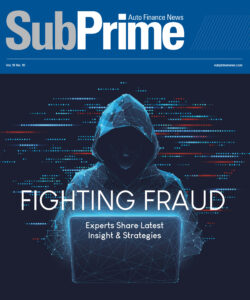TransUnion: Subprime Auto Loans Trigger Q1 National Delinquency Rate Uptick
CHICAGO — TransUnion didn't hesitate in stating the slight
uptick in the national auto loan delinquency rate occurred because of a rise in
delinquencies for subprime borrowers.
This week, analysts found that delinquencies for subprime buyers
crept up to 5.50 percent in the first quarter from 5.09 percent a year earlier.
As a result, the national auto loan delinquency rate — what
TransUnion defines as the percentage of accounts 60 or more days past due —
increased slightly year-over-year during the first quarter, ticking up from
0.82 percent to 0.88 percent.
On a quarter-over-quarter basis, TransUnion indicated the 60
or more days past due auto loan delinquency rate experienced a seasonal
12-basis point drop from 1.00 percent in the closing quarter of last year.
Subprime borrower accounts also saw a quarterly decline from
6.02 percent at the end of 2012.
"We've been monitoring the auto loan landscape closely for
some time to see if increased subprime lending would start pushing delinquency
rates up," said Peter Turek, vice president of automotive for TransUnion.
"We found that while subprime borrowers are receiving more
auto loans, the percentage of these loans to all auto loans made remains the
same as last year so there has not been a dramatic effect to the overall
delinquency rate," Turek continued.
TransUnion's analysis also determined that subprime
borrowers in the first quarter made up 15 percent of all auto loan accounts, the
same percentage as the year-ago period. The firm added that level was "much
smaller percentage than what has been observed in the last few years."
In contrast, analysts pointed out that auto loan account balances
in the subprime category have experienced a rise of 6.6 percent from $11,266 in
Q1 of 2012 to $12,006 in Q1 of this year.
In the last two years, balances for subprime consumers have
increased more than 11 percent, according to TransUnion.
The firm went on to mention that average auto loan account
balances for the entire population, while increasing for eight consecutive
quarters, only rose 4 percent on a year-over-year basis from $12,755 in Q1 2012
to $13,260 in Q1 of this year. The increase is 8 percent in the last two years.
"While the auto loan market has been performing
exceptionally well the last few years, there is some concern about the subprime
market," Turek said.
"On one hand, subprime borrowers make up a smaller
percentage of the overall market and their delinquency rates are actually the same
as they were two years ago," he continued. "However, their account balances
have risen more than $1,200 in that same period placing more of an economic
burden on lenders if they were to go delinquent."
TransUnion's Industry Insights Report also showed a
continued increase in total account volumes with a 6.1-percent rise observed in
the last year.
"The increase in the number of auto loans points to the
general view that the auto finance market is performing quite well," Turek said.
"Although the current delinquency percentage is lower than
2009 there are 82.7 percent more subprime loans originated now than in 2009,"
he went on to say. "As the sheer number of delinquent consumers rise, lenders
will need to stay focused on managing their portfolios."
Turek reiterated that the report data provided is gathered
from TransUnion's proprietary Industry Insights Report, a quarterly overview
summarizing data, trends and perspectives on the U.S. consumer lending
industry. The report is based on credit data from virtually every credit-active
consumer in the United States.
Continue the conversation with SubPrime Auto Finance News on LinkedIn and Twitter.
Normal
0
false
false
false
EN-US
X-NONE
X-NONE
/* Style Definitions */
table.MsoNormalTable
{mso-style-name:”Table Normal”;
mso-tstyle-rowband-size:0;
mso-tstyle-colband-size:0;
mso-style-noshow:yes;
mso-style-priority:99;
mso-style-qformat:yes;
mso-style-parent:””;
mso-padding-alt:0in 5.4pt 0in 5.4pt;
mso-para-margin-top:0in;
mso-para-margin-right:0in;
mso-para-margin-bottom:10.0pt;
mso-para-margin-left:0in;
line-height:115%;
mso-pagination:widow-orphan;
font-size:11.0pt;
font-family:”Calibri”,”sans-serif”;
mso-ascii-font-family:Calibri;
mso-ascii-theme-font:minor-latin;
mso-fareast-font-family:”Times New Roman”;
mso-fareast-theme-font:minor-fareast;
mso-hansi-font-family:Calibri;
mso-hansi-theme-font:minor-latin;}

 View The Latest Edition
View The Latest Edition

